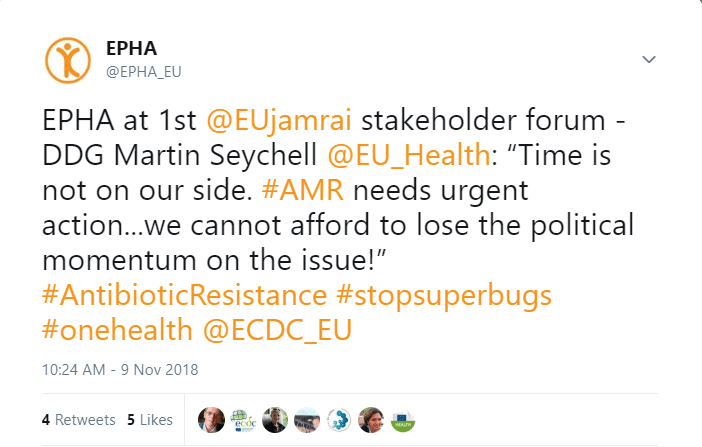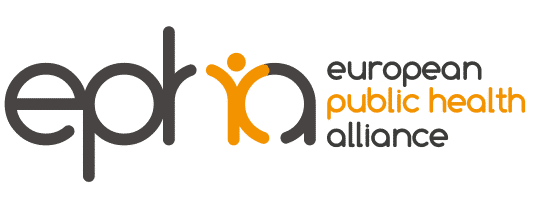
The European Joint Action on antimicrobial resistance and health-care associated infections established by the new European One Health Action Plan against AMR aims to foster synergies across AMR- related activities and policy developments among EU Member States. The European Joint Action on antimicrobial resistance and health-care associated infections (EU JAMRAI) was launched in September 2017. One of its overall aims is to support member states in the development and implementation of One Health National Action Plans (NAPs), which they committed to through the adoption of the Global Action Plan on AMR by the 67th World Health Assembly in 2015. The EU-JAMRAI, co-funded by the EU Health Programme, has produced guidelines to improve the management of AMR and health-care associated infections (HCAIs) at national and local level and has brought together different experts and policy-makers to share knowledge and good practices in the field. It is composed of different actors:
- 44 participating partners and 21 collaborating partners from academia, several EU governments, national public health institutions and agencies
- 39 stakeholders including healthcare professionals, international organizations, civil society organizations including EPHA, patient associations and industry representatives.
EPHA participated in the EU-JAMRAI’s first Annual Meeting and first Stakeholder’s Forum held in Vienna on 8-9 November 2018, which showcased the progress that has been made on the 9 work packages of the Joint Action to date as well as foreseen future initiatives. Moreover, through consultation with partners, work could be adjusted for the remaining duration of the project, based on recommendations received. In addition to the 4 horizontal work packages, the remaining packages address the implementation of AMR NAPs, appropriate use of antimicrobials in humans and animals, infection prevention and control, awareness-raising, and research and innovation. The ongoing work as part of the EU-JAMRAI 5th work package covering the implementation of NAPs is of particular importance. Following the mapping of NAPs and AMR strategies in several European countries, the package leaders and partners have recently embarked on a country-to-country peer review system. The country-to-country visits involve member states’ evaluations of each other’s NAPs and strategies, providing recommendations for improvement.
Some interesting questions have also been explored by the 9th work package which seeks to identify knowledge gaps in relation to AMR, HCAI, infection prevention and control and research priorities. Which priorities make it to NAPs and strategies? Are they simply fragmented ad-hoc plans joined up to form the basis of one action plan? How can we ensure that evidence is translated to policy and practice to combat AMR? While EPHA welcomes such opportunities to discuss ways of combating the growing AMR threat, stakeholder engagement in such initiatives could be facilitated and strengthened further. For example, the EU-JAMRAI collaborates and reports to the EU One Health Network of experts. However, civil society organisations are not part of this platform for policy exchange and development, therefore, the engagement possibilities and the channels for providing input or recommendations on different work strands are rather limited. Yet, it is only through multi-stakeholder exchanges, that policy and practice expertise across the different sectors of AMR could be maximized. In fact, ensuring a whole-of-society approach to tackling AMR will not only facilitate antimicrobial stewardship and inter-sectoral collaboration but the very implementation of high-level global political commitments and national policies at local and grass-roots levels.
Ann Marie Borg
Policy Coordinator
